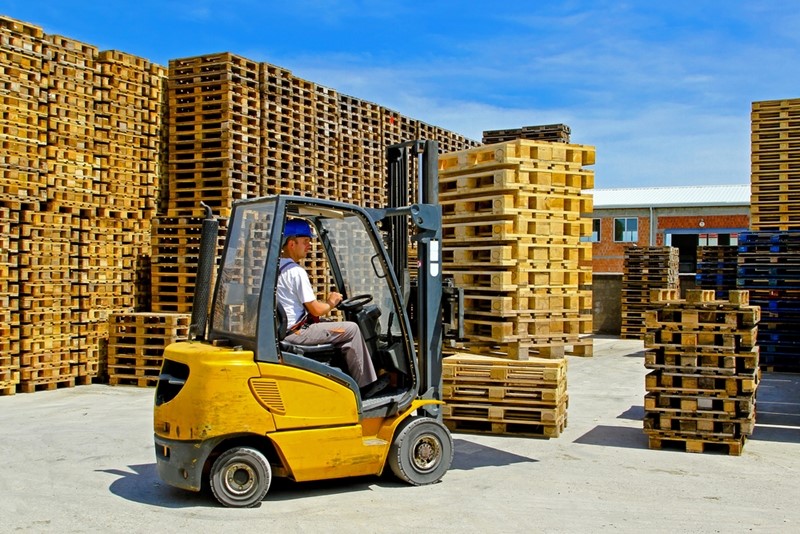Growing industries are a welcome boom to the economy. One market’s simple boost in yearly revenue is sometimes enough to spur innovation and an increase in earnings in similar sectors. So, when Dodge Data & Analytics released its 2015 Dodge Construction Outlook report, many other industries were also intrigued by the predictions for 2015.
Thankfully, the news was positive. According to Dodge, the total U.S. construction starts for 2015 will increase by 9 percent. This means the market this year will be worth around $612 billion. When compared to 2014’s statistics – a 5 percent increase from $564 billion- it demonstrates that the construction industry contributes largely to the success of the overall U.S. economy. This boom in construction will also spur activity for the reverse supply chain.
With steady growth expected in the industry in 2015, many companies will need to keep up with high demands across residential, non-residential, and government projects. This means that construction firms should expect to upgrade to new equipment, replacing older models that not only take up space, but are also non-performing. While it’s important to take advantage of new technology and safety is a paramount focus, large acquisition processes often leave project managers with hundreds of thousands of dollars’ in surplus equipment.

The acquisition of construction equipment can be costly and many companies have ineffective processes to manage their surplus.
The impact on the reverse supply chain
The predicted growth in the construction industry will undoubtedly affect many aspects of the market. For example, the Associated General Contractors of America released a report that found construction industry employment reached a five-year high in August 2014. Organizations are eager to build, and firms are increasing their staff to finish jobs in a timely process.
The reverse supply chain will also see a large boost in activity thanks to the growth in the construction industry. When looking ahead, business managers should consider the amount of new equipment required for the upcoming year. Technology improves quickly and if a company wants to better compete for contracts, it will need to acquire brand new, cutting-edge tools and machinery.
However, procurement can put a pinch on wallets. To mitigate those expenses, construction businesses should dispose of or resell old equipment in a sustainable, compliant way. Companies can either internally redeploy those assets through a web-based tool – moving assets to other job sites where they are needed – or they can sell surplus assets through an expert provider via online channels. These proven methods recoup revenue which can be directly applied to procurement budgets, ensuring that organizational spending remains low.
Best practices for surplus construction equipment
To put it simply, businesses will need to begin reworking their asset management processes to guarantee success throughout 2015 and beyond. Supply Chain 24/7 recommended setting clear objectives in order to simplify surplus asset management procedures. Additionally, the publication reported that good reverse logistics programs are unlikely to appear suddenly, which means that many businesses can benefit by working closely with trusted asset management companies. That’s not all construction firms can do, however.
Here are five best practices for organizations that find themselves with surplus construction equipment this year:
1. Take complete inventory of all assets
It’s important to know the value of what you have; determine the surplus you have in hand and if possible, estimate values for surplus. This task can be much simpler with a trusted valuation team who know the secondary markets and software such as AssetZone® to better manage and streamline surplus. Since AssetZone is a web-based program, the entire organization can access it and user and restriction levels can be set, ensuring that decisions are well-informed. Start by focusing on identifying the high-value, late-model equipment first, as selling those assets quickly will generate more return for the bottom line. However, always keep in mind that 20 percent of the equipment will bring in 80 percent of the value.
2. Determine the appropriate sales channel
Oftentimes, a multi-channel solution that incorporates more than one sales channel and can include online auctions, private sales, or local advertisements, is a good option. The channels selected should be based on the type of equipment, the buyer base available, and the location of the company. Additionally, an asset management partner can anticipate interest in certain assets based on its industry knowledge and insight into buyer networks.
Always remember, some channels are better than others. For example, online auctions are better for high-demand products while private sales are more suited to big-ticket or specialized equipment that may require more time to sell.

Everything from tools to machinery can be sold for a larger ROI.
3. Develop targeted marketing collateral
Selling the surplus equipment also means increasing awareness of the asset(s) to the right audience(s). Therefore, invest in advertisements, email blasts, and PR (public relations), all of which will help drive potential buyers to the auction or sale. Be sure to include plenty of images, video, and a highly-detailed description of the item leaving no information out, to encourage buyers to bid.
4. Schedule a preview period
Allowing potential buyers to personally inspect the equipment will give them the opportunity to see the asset(s) firsthand. This, in turn, creates more transparency and ultimately increases recovery value. If the potential buyers are geographically far away, consider conducting a web-based way to better show off the equipment.
5. Vet all buyers and have a removal period in place
To avoid any surprises or a sale default, organizations should make sure to vet all buyers ahead of time, as well as provide bidders with a set of guidelines for what to expect post-purchase. Then communicate a definitive timeline on asset removal and delivery. A single point of contact for these processes will limit disruption of daily operations and ensure that every sale goes smoothly. Tapping into a solution provider to manage all marketing as well as buyer communication streamlines this process for the company.
Now is the time to act for businesses in the construction industry. The sooner that old equipment is sold or disposed of, the more quickly brand new tools and machinery can be procured. With industry-wide growth underway, 2015 will be an opportunity to stand out within the industry. Through an aligned partnership, organizations can ensure its surplus construction equipment is sold in a more effective, sustainable, and compliant way that maximizes recovery.



Comments are closed.